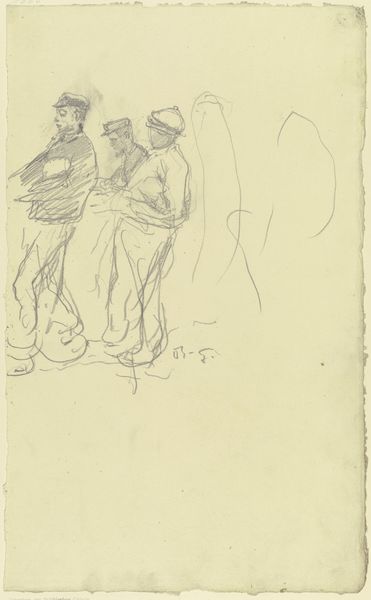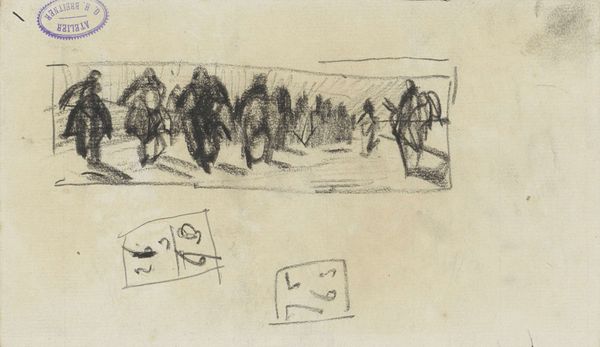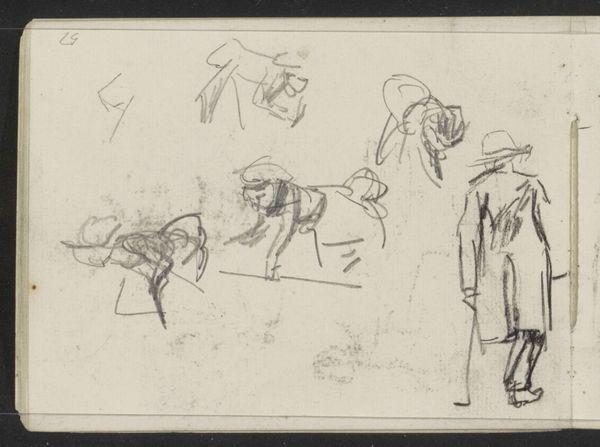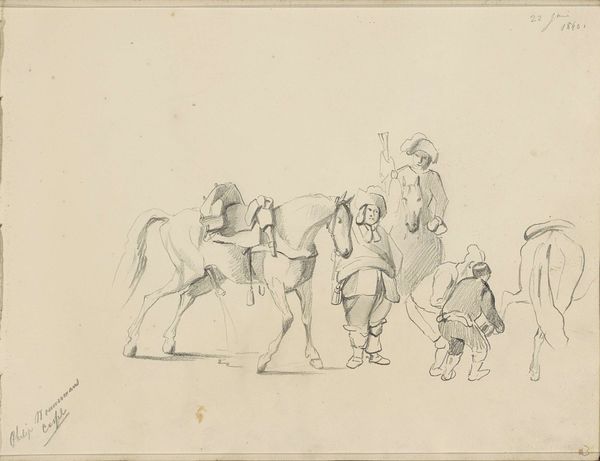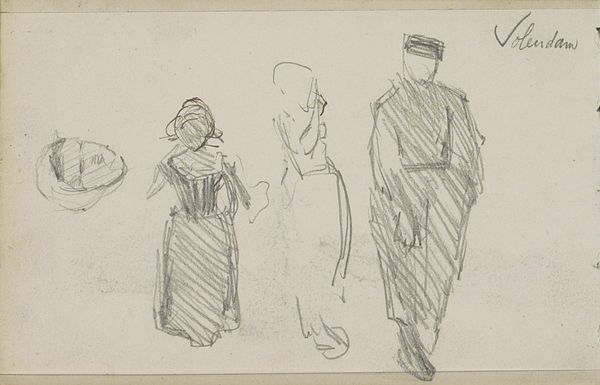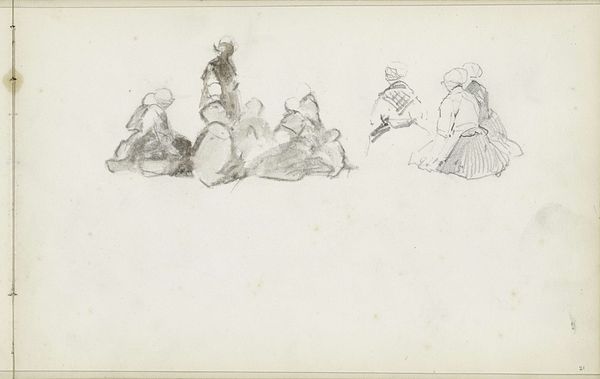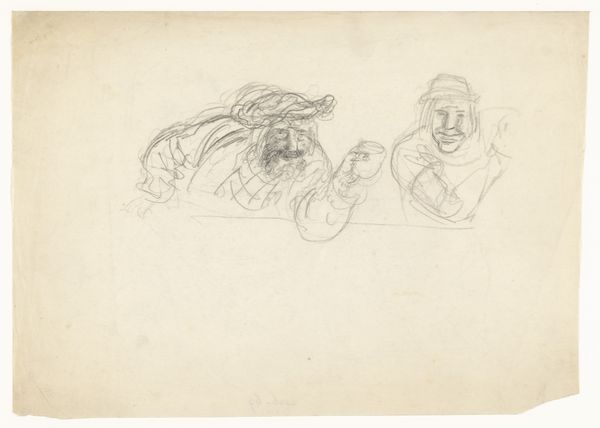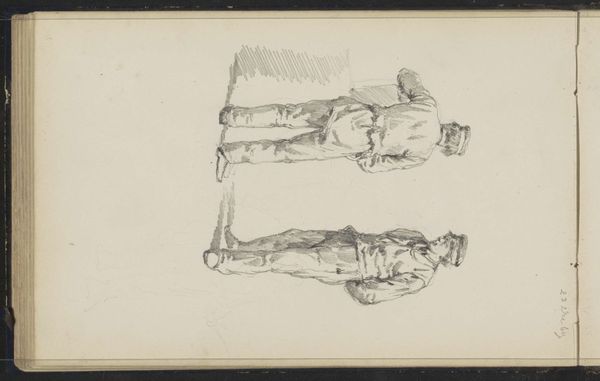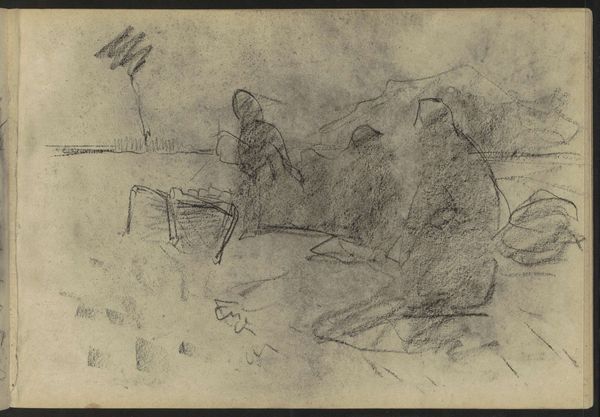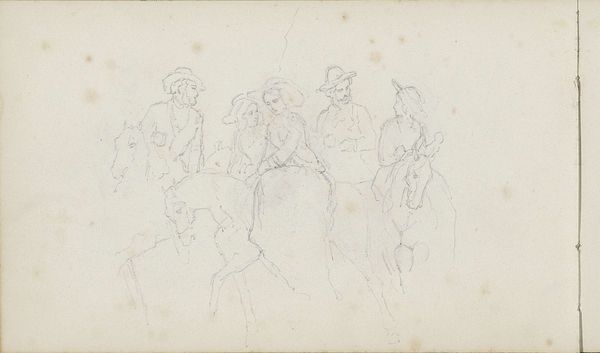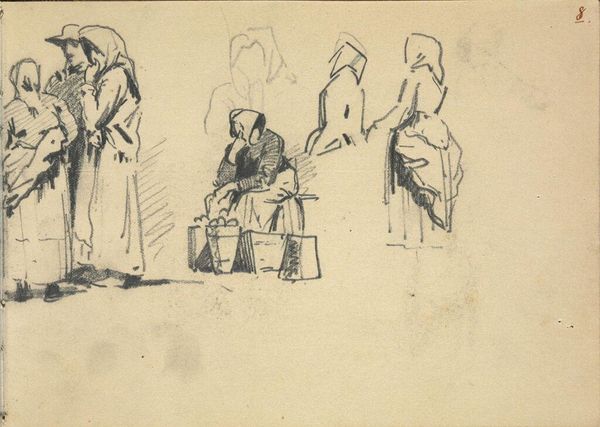
drawing, paper, pencil
#
drawing
#
pencil sketch
#
figuration
#
paper
#
pencil
#
genre-painting
#
realism
Dimensions: height 206 mm, width 314 mm
Copyright: Rijks Museum: Open Domain
Curator: Here we have "Drinkenden aan de dis," or "Drinkers at the Table," a pencil drawing by Henk Henriët, dating from the 1930s, here at the Rijksmuseum. Editor: The immediate impression is one of...rough conviviality. A kind of raw, almost theatrical portrayal. I’m intrigued by the apparent lack of refinement, which in itself feels very deliberate. Curator: It is interesting to consider it as a genre painting rendered through a modern lens. Think about how it challenges societal norms concerning class and leisure, presenting working-class individuals in a moment of relaxed enjoyment. There's a democratization of subject matter at play here, right? Editor: Precisely. And notice the application of pencil, how it builds up tonal depth to suggest the volume of the figures, their garments. Henriët’s attention to these details –the folds of fabric, the weighty hands – this underscores the materiality of their existence, their labor, perhaps? Curator: I find myself pondering the socio-political climate of the Netherlands during the 1930s. The shadow of economic hardship looms large, influencing the artwork's themes of camaraderie amidst struggle. Do these figures find solace or escape from their daily hardships within this setting? Editor: You see it echoed in the production itself, don't you? Pencil on paper – utilitarian, accessible. Henriët isn't using luxurious materials. He's recording a scene, capturing something of everyday life. Curator: Definitely. And from a feminist perspective, you might examine the noticeable absence of women in the depicted social space, further unpacking patriarchal constructs related to labor, leisure, and social interaction that the artist has both captured and contributed to by excluding female participants. Editor: The composition emphasizes their shared table. It anchors them. Consider the idea of consumption—the cups, the drinks—but then also the consumption of their time, their lives in this social act. The drawing becomes an artifact itself, recording this intersection. Curator: Absolutely. Henriët really invites us to analyze how the simple act of sharing a drink becomes charged with deeper meaning. Editor: It reminds us that even the simplest sketches can speak volumes about life's complexities. Curator: Yes, through Henriët's deceptively simple medium, a richer socio-political tableau emerges than we initially anticipated.
Comments
No comments
Be the first to comment and join the conversation on the ultimate creative platform.
